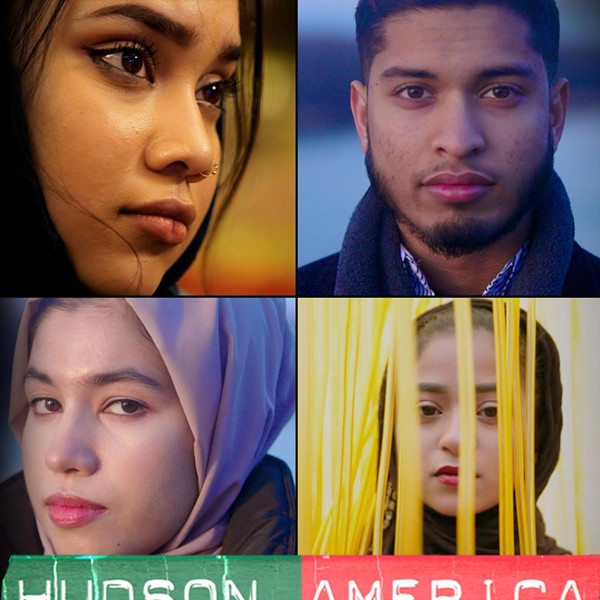
It’s a pretty big target to miss. More than a million immigrants achieve permanent resident status every year (twice the estimated number of undocumented arrivals). Seven hundred thousand people a year become US citizens, and half a million receive work visas. These immigration numbers are unprecedented in our history: For most of our nation’s more than 200 years, fewer than 500,000 immigrants were admitted annually and usually less than 300,000.
That pattern has been radically altered. A 2008 Pew Research Center report attributes 82 percent of US population growth to immigration, noting that the foreign-born population will pass its historic 19th-century peak of 15 percent within two decades. Largely because of immigration, the US Census Bureau estimates that from 303 million today we’ll grow to 400 million people as early as 2040, and 420 million by 2050. While some parts of the world, including Western Europe and Japan, are experiencing “birth dearth” with below replacement-level fertility, the US is growing so fast we now have the third-largest population in the world, after only India and China.
According to the Center for Immigration Studies, if we legally admitted just 300,000 people a year, by 2060 the population would be 80 million less than it’s likely to be on our current course.
Fifty-three percent of the 100 million people we just added were recent immigrants or their descendants, says the Pew Hispanic Center. According to the authoritative Population Reference Bureau (PRB), at least a third of US population growth between 1990 and 2000 was due to immigrants, and first- and second-generation Americans will constitute a third of our citizenry by 2025—the highest number ever.
Obviously, our numbers are swelling as a result of both legal and illegal immigration. PRB’s estimates are probably considerably understated, because of the difficulty of quantifying just how many illegal immigrants are currently in the country. (The most popular number is 12 million, but other estimates are much higher.)
Tom Barry, a senior analyst with the Center for International Policy (CIP), admits that there’s “no question that most population growth is from immigrants and the effects of ‘chain migration’ [the policy of family reunification that gives priorities to extended family members of current residents].” Barry’s own proposals for immigration reform not only include a path to legalization but also restrict family reunification to “the immigrant’s spouse and children,” an idea that he admits is controversial.
Indeed it is. The New York Immigration Coalition, for instance, says that any immigration bill that includes cuts in family immigration “is a profound betrayal of the family values and basic fairness that all Americans cherish.” Chung-Wha Hong, the group’s executive director, calls for “a broad and simple legalization for immigrants; a future worker program with full rights and a clear path to citizenship; family unity; and strong protections for due process and civil rights.” Under such a plan, illegal immigrants would have nearly the same rights as legal immigrants.
There are “push” factors that cause people around the world to seek better lives for themselves. And there is an environmental impact to our projected growth—a virtually taboo subject for many of the larger green groups, and for much of the media, too. It seems nearly impossible to have a sane and unbiased discussion of this hot-button issue, one that avoids racism and just looks at the numbers.
The “I” Word
There is no more agonizing issue on the American political agenda than immigration. America is, as we’re frequently reminded, a nation of immigrants. We absorbed 25 million people between 1860 and 1920, and most observers believe we are a stronger nation because of it.
But America’s current circumstances are vastly different than they were at the turn of the century. In 1900, there were 25.6 Americans per square mile in the US; now it is 83 per square mile, a more than 300 percent increase. Further, immigrants are concentrated in certain states, with California being a prime destination. The state has 36 million people today (with a relatively dense 230 people per square mile). The population has doubled since 1960, but it could nearly double again, to an astonishing 60 million, by as early as 2050.
California stands out in the immigration debate. Every hour, it adds 60 people. Between 1990 and 2000, California grew from 29.8 to 34 million people, an increase greater than the increase in all the northeastern states from Maine to Virginia in the same period. The rapid growth is fueled by the fact that, as the PRB reports, “Foreign-born couples tend to have more children than US-born couples. Foreign-born residents are in their prime childbearing years, and immigrants often come from countries with larger families.” Census data shows that Hispanics have an average of 2.9 children per woman, compared to 1.8 for non-Hispanic whites. This is a factor in the recent increase in the US fertility rate to a replacement level of 2.1, a 35-year high-—higher than that of any industrialized country.
The Environmental Argument
Why is immigration an environmental concern? The fact is that America’s rapid growth makes it nearly impossible to achieve sustainability. According to Population-Environment Balance (PEB), 93 percent of US increases in energy use since 1970 can be attributed to population growth. To house our growing numbers, we pave over an area the size of Delaware every year, the group says. Our population growth is a big factor in the endangered or threatened status of as many as 700 species of plants and animals. Another 9,000 species are at risk. And every day, we remove 3.2 billion gallons of water from aquifers that are not replenished by natural processes.
Although increased population has many other environmental effects (urban sprawl and the loss of open space, to name two), energy and climate effects are central and little understood. Any efficiency gains we make are being swamped by rapid population increases and their attendant increased energy demand.
The wasteful American lifestyle is one major culprit. With just 5 percent of the world’s population, the US is the top consumer of 11 of the world’s top-20 traded commodities. We use a quarter of the world’s fossil fuel. We have more private cars than drivers with licenses, and, at least until recently, more than half of those sold were gas-guzzling SUVs and pickup trucks. Between 1975 and 2002, the average American home grew 38 percent, even though household size declined. We have an impact disproportionate to our population, but the growth of that population exacerbates the problem.
“US population growth explains the preponderance of growth in our national energy consumption,” says Leon Kolankiewicz in a report for Numbers USA, which advocates lower immigration rates. In 1970, he points out, with the US population at just 200 million, a US awash in cheap electricity and driving huge gas-guzzling, inefficient vehicles used 67 quadrillion BTUs (quads) of energy and 14.7 million barrels of oil a day. In 2006, with 300 million people and after many energy-efficiency improvements, we used 100 quads of energy and 20 million barrels of oil a day. And the increase in greenhouse gas emissions in the US, which rose 13 percent between 1990 and 2000, closely mirrors the just-over-13-percent population increase.
Push and Pull
It’s hardly surprising that so many people want to come to America from the overpopulated developing world, and the “push factors” that cause them to seek a new life in the US are compelling. Who can blame a family mired in poverty for wanting a better future? According to Population Connection, the swelling numbers abroad create pressures leading to “increased poverty, hunger, land degradation, a lack of health services and limited social and economic mobility. These problems motivate people to leave their homeland in search of greater opportunities.” And what better place to go than the affluent, welcoming US, the destination for 20 percent of the world’s international migrants?
How do mainstream groups address these emigration pressures without calling for taboo mandatory caps on US immigration? Population Connection wants to combine action at home (ensuring contraceptive availability, defending reproductive rights) with foreign aid and diplomacy abroad. “If our neighbors to the South see real hope for better lives at home, they will feel much less pressure to emigrate,” the group says.
Such views have many supporters. “What would stop the illegal migration?” asks G. Jefferson Price III, a former Baltimore Sun foreign correspondent, now with Catholic Relief Services. “A reversal in the trends that have devastated the economies of the countries whose people feel they have no alternative but to leave. We are spending a lot of energy and wealth to keep immigrants out of the US. If we and the governments of the countries they are coming from were to devote as much to improving their standard of living at home, they might not feel the need to come to America.”
As Price points out, the options for the desperate immigrant are staying home “and nearly starving in appalling economic conditions” or trying to cross into the US, where if they can evade the Border Patrol, their prospects will immediately improve. It’s hardly surprising that up to 30 million people have made that trip successfully, and many others have failed yet keep on trying.
Betsy Hartmann, director of the population and development program at Hampshire College, says, “If we’re going to have a big population because of immigration, then we should take it as a chance to reduce individual consumption and carbon footprints. Instead of a one-child policy, we should encourage a one-car policy.”
Hartmann claims that sprawl is caused largely by “poor zoning, planning, transport, and taxation policies.” She supports a massive US investment in green technology. Hartmann also hopes that India and China—both of which are increasing their per capita global warming emissions—can leapfrog over the West’s oil obsession and go directly to cleaner energy sources. That’s obviously a worthy goal, but when profit is the key motivation, the investment often goes elsewhere.
The obstacle is to get countries around the world to focus on eradicating hunger, infant mortality and poverty. A major hurdle would be limiting births through universal access to family planning and maternal health programs. In 1994, 179 countries met in Cairo, Egypt, for the International Conference of Population and Development (ICPD), with the goal of forging an international commitment. The conference issued a 20-year plan known as the “Cairo Agenda” that included:
• Universal access to reproductive services and family planning
programs by 2015;
• Full participation of women in political and public life;
• A consensus target of .7 percent of Gross National Product per donor country for international development assistance.
This agenda has languished. The 1994 call was for $17 billion annual commitment for population and reproductive health programs by 2000, and $21 billion by 2015. By 2004, less than $10 billion per year was committed, and the Bush Administration—which opposes abortion and, in many cases, family planning—has failed to meet the need. By contrast, the administration’s Iraq War has already cost American taxpayers more than $500 billion, and bills are now running $275 million per day. The same funds strategically applied could have gone a long way toward ending world poverty.
According to Zonny Woods, an international consultant on reproductive health issues, “The Bush Administration’s reinstatement of the Global Gag rule [which prohibits U.S. funds from going to groups that in any way aid abortion] has had a severe impact on organizations that have rejected it. Not only are they no longer able to receive USAID funds, they are unable to receive much-needed USAID-donated contraceptives.”
Nevertheless, Thoraya Ahmed, executive director of the United Nations Population Fund (UNFPA), says that the ICPD process offers the best hope for reducing migration pressures. “To address migration, the growing poverty and demographic divide between rich and poor countries must be addressed,” she says.
Echoing this theme is Tom Barry of CIP. “A comprehensive US immigration policy should support job creation and development programs,” he says. “That, unfortunately, is not happening, because the economic policies of countries like Mexico are complicated by economic ‘liberalization’ programs like NAFTA, which support US interests and are not connected to job creation.” The status quo shortchanges Mexicans looking for work.
Taught by TV
More family planning clinics may not be the answer. Bill Ryerson, president of the Vermont-based Population Media Center (PMC), analyzed 50 demographic and health surveys carried out in the last few decades and found that the predominant reasons women in developing countries give for not using birth control are: 1) fear of side effects; 2) male opposition; 3) religious opposition or the belief that family planning is not morally appropriate; and 4) fatalism—it’s up to God. “Lack of access to services is cited by less than two percent of respondents; in many countries it is less than one percent,” Ryerson says. The evidence suggests that family planning education is as important as opening clinics.
What clearly does work is changing hearts and minds about family size and the use of birth control, a decidedly grassroots phenomenon. And that’s exactly what PMC does by creating popular soap opera-type radio shows. The model is Mexico, where Miguel Sabido, vice president of the major TV network Televisa, created a series of telenovelas with family planning themes. From 1977 to 1986, when these programs were on the air, Mexico experienced a 34 percent decline in population growth and, in 1986, won the United Nations Population Prize. In 1975, the average woman had 3.5 children; by 1985, it was 2.4.
A spokesperson for US Aid for International Development, speaking on background, calls Mexico “a graduated country.” The agency stopped working there in 1999, after handing its family planning programs over to the Mexican government. “That’s one of our success stories,” the spokesperson said. “As in Turkey, Indonesia, and Morocco, the government became an active partner with us and the result was a significant drop in fertility rates.”
The drop in Mexican fertility rates—to just over replacement level—would seem to be an interesting talking point in the current immigration debate, but it is rarely mentioned. One imagines it would turn our elected representatives into enthusiastic supporters of production aid to family planning soap operas, but that hasn’t happened.
When PMC launched it Sabido-type soap opera program in Ethiopia, the country had a five-year supply of oral contraceptives gathering dust in a warehouse. Only six percent of the population used any modern method of birth control and the birth rate was 5.4. Now birth control is in demand and, in the most populous Amhara region, fertility has dropped a full child, from 5.4 to 4.3.
A TV soap opera broadcast in India in the early 1980s, “Hum Log,” had very high ratings and a similar success story. A study showed that 71 percent of viewers learned from watching the show that family size should be limited. A second TV soap show, “Humraahi,” became the top-rated program on Indian television, with 230 million viewers. Again, surveys showed changing attitudes on such questions as the proper age for marriage and women in the workforce.
The same approach, in cooperation with Save the Children, has also worked well in reducing AIDS incidence among Indian truck drivers. PMC has spread its TV-driven message around the world, and works in 15 countries with offices in Brazil, Ethiopia, India, Jamaica, Kenya, Malawi, Mali, Mexico, Niger, Nigeria, the Philippines, Rwanda, and Sudan. Government cooperation varies, but the government of Ethiopia has provided funding and Sudan offered free airtime on state-controlled TV.
Reverse Immigration
Other factors not recognized in the heat of an election year are also slowing immigration-related population growth. In Bridgeport, Connecticut, music clubs fill up on weekends with Brazilian customers intent on dancing to the music of one of their favorite bands—Pink Floyd. There were only an estimated 35 Brazilian families in Bridgeport in the early 1980s, but now there are many thousands. Brazilians have opened restaurants, painting businesses, and travel agencies, and their arrival has added spice to the city’s beat.
But immigration and naturalization officials noticed a significant drop in new Brazilian arrivals after 1992, dovetailing with an economic downturn in the US. Now that pattern may be repeating, as Brazilians (especially illegal immigrants) face stronger enforcement and a recession that makes it harder to find work. Some can’t renew driver’s licenses, making it a challenge to keep a job in a battered economy.
Brazilians in strongholds such as Newark, Danbury, and Boston say they’re pulling up stakes and making the reverse trek back to their homeland. The Boston-based Brazilian Immigrant Center estimates that 5,000 returning Brazilians left Massachusetts in 2007.
Arizona (where one in 10 workers is a Hispanic immigrant) passed a tough new law that went into effect January 1, slapping businesses that knowingly employ the undocumented with business license suspensions of up to 10 days. Second-time offenders lose their licenses entirely. The law is considered so draconian by illegal Mexican immigrants in Arizona (some with long-held employment) that many are reportedly “self-deporting” back to Mexico.
“The number returning to Mexico is difficult to calculate, but there is no question that many families are leaving, according to Mexican government officials, local community leaders, and immigrants themselves,” reports the Arizona Republic. In 2007, the Mexican consulate processed 16,500 applications for passports, which nationals will need when they return to Mexico.
Filling Economic Gaps
But there’s another side to the immigration debate. Supporters of maintaining current high levels say that a constant influx is necessary to keep the US economically competitive. Without immigrants picking onions in California or cleaning gutters in Connecticut, they say, those jobs would go begging.
“Our immigration system is broken and the government must act in a comprehensive way to fix it,” says Randel Johnson, US Chamber of Commerce vice president for labor, immigration, and employee benefits. “Our immigration and visa policy must ensure employers are able to fill jobs critical to our economy when American workers are not available.” Some labor unions have backed this plan, too, making a rather unusual coalition.
And liberals use remarkably similar reasoning in endorsing Bush’s goals for amnesty and guest worker programs. “Comprehensive immigration reform would protect our security, allow our economy to grow, protect the wages of US workers, honor our value of rewarding hard work, restore the rule of law, and respect America’s traditional embrace of immigrants,” says the Center for American Progress.
President Bush said his failed plan to create a temporary worker program (admitting 400,000 people annually) would “meet the legitimate needs of American employers.” The Chamber has argued, in Congressional testimony, that because the Bureau of Labor Statistics expects the number of those in the work force between the ages of 25 and 34 to grow by only three million between 2002 and 2012, and says the aging work force will erode American competitiveness. It adds that the US fertility rate will decline to 1.91 between 2015 and 2020, below “replacement level.” Meanwhile, by 2010, 77 million baby boomers will retire. By 2030, one in five Americans is projected to be a senior citizen, the Chamber says.
But selectively quoting the fertility rate is highly misleading, because it ignores the population growth fueled by immigration. Without the constant influx, the US would indeed have a shrinking population similar to Western Europe. But with immigration, it is slated to take a giant leap forward. The Census Bureau estimates the US population will reach an incredible 419 million by 2050. With numbers like that, an American “birth dearth” affecting competitiveness is not only unlikely, but it’s also well nigh impossible.
Obviously, the employment issue has as many facets as a diamond; for every immigrant who “takes” a US job, there’s another one being shipped overseas by the same companies that encourage high immigration rates. And new factories abroad encourage people to stay home and not emigrate.
Costs and Contributions
Immigrants contribute much to American society, and it’s important not to scapegoat them. According to Sebastian Mallaby, director of the Council on Foreign Relations’ Center for Geoeconomic Studies, in California in 2004 an impressive 94 percent of undocumented men ages 18 to 64 were in the workforce, compared with 82 percent of native-born men. The Pew Hispanic Center reports that approximately 7.2 million undocumented immigrants are working in the US today, comprising some 4.9 percent of the overall workforce.
“Far from being part of a shiftless underclass, the act of coming to the United States makes immigrants among the most upwardly mobile groups in the nation, only a bit behind hedge-fund managers,” Mallaby says.
And there is conflicting information about illegal immigrants’ burden on social services. They pay no income taxes but do pay sales and payroll taxes. They visit hospital emergency rooms and attend schools, but are ineligible for welfare, food stamps, and Medicaid. According to Gordon Hanson of the University of California, San Diego, the net effect of undocumented workers on native-born Americans is roughly zero. A 1997 RAND Corporation study had similar findings.
But Hanson’s numbers are far from definitive. Robert Rector of the conservative Heritage Foundation comes to much different conclusions. He says the 4.5 million low-skilled immigrant households circa 2004 produced an average net fiscal deficit of $19,588, or $89.1 billion in total. “Over the next 10 years,” he wrote last year, “the net cost (benefits minus taxes) to the taxpayer of low-skill immigrant households will approach $1 trillion.”
Another study, by Donald Huddle of Rice University, estimates that immigration to the US since 1970 (both legal and illegal) has cost taxpayers a net $68 billion (after subtracting the taxes legal immigrants pay).
But it’s not all about money; the immigration debate also has moral dimensions. “Comprehensive immigration reform is a great moral debate,” says Jim Wallis, president and executive director of Sojourners/Call to Renewal. “‘Who would Jesus deport?’ is a fair question.”
Rabbi Steve Gutow, executive director of the Jewish Council for Public Affairs, says, “How we treat the 12 million undocumented who are here in many ways colors who we are as Jews. How we react to those who want to enter our borders and become part of our country says a lot about how well we remember our own stories when we were immigrants looking for a safe haven, a place to rest and live and prosper.”
Some environmentalists argue passionately that it’s not fair to simply tell aspiring Americans—some of whom risk their lives and their entire life savings in an effort to cross the border for a better life—that they should simply stay away.
Given the current, highly charged debate, it’s unlikely that we’ll achieve national consensus on immigration anytime soon. But we need to focus here. How big a country do we want to be? What is our country’s carrying capacity, and did we exceed it many years ago? Why do people choose to emigrate, and what can we do to ease conditions in their countries? That’s a debate worth having.
















